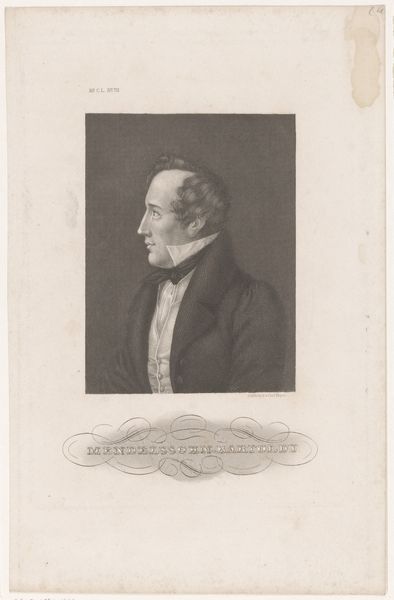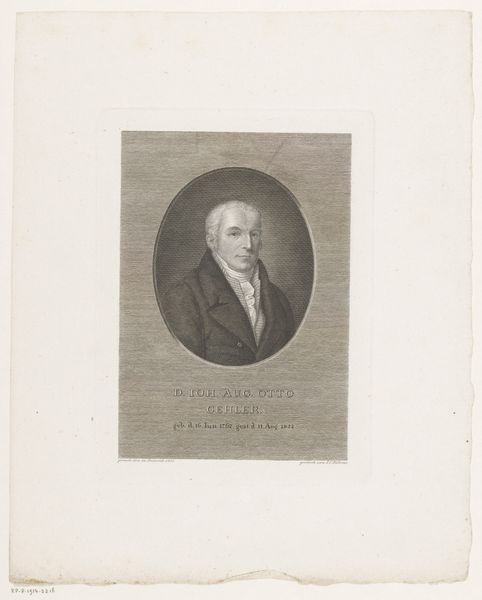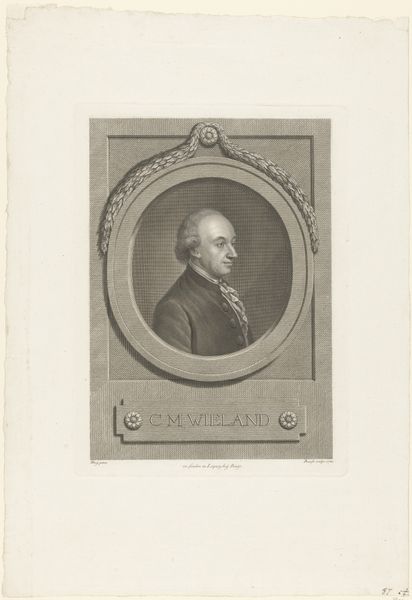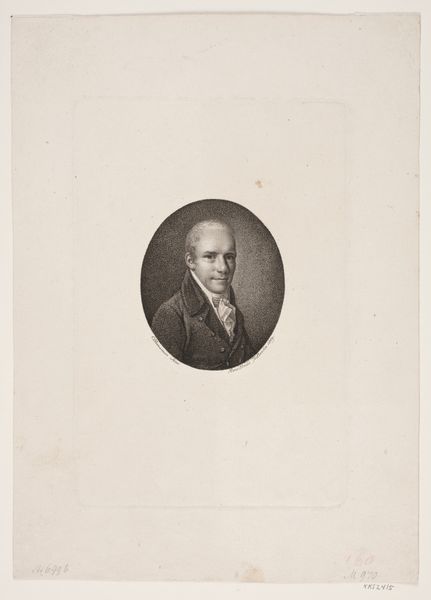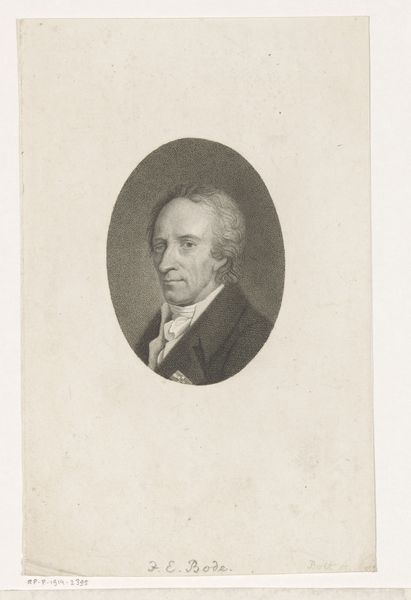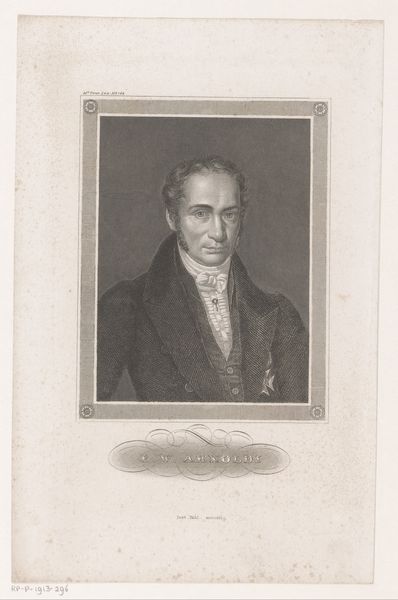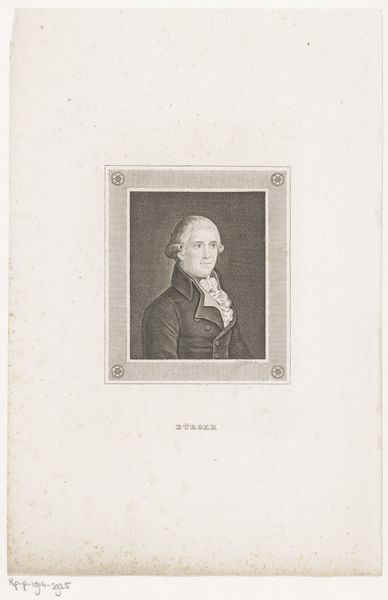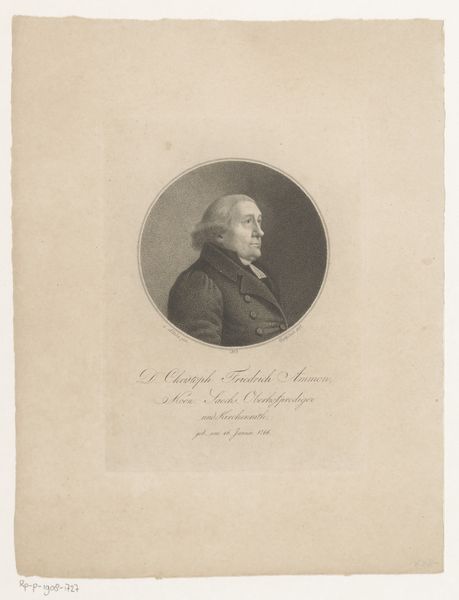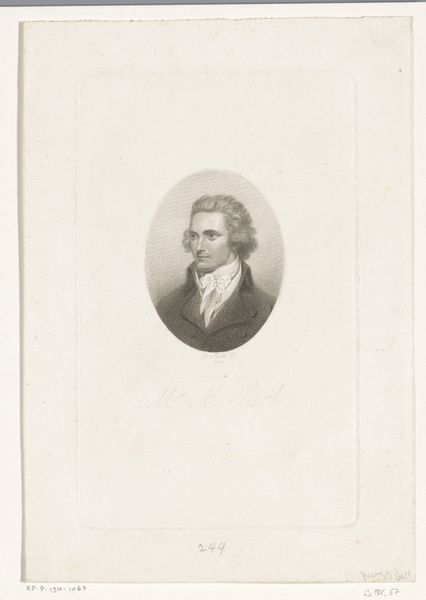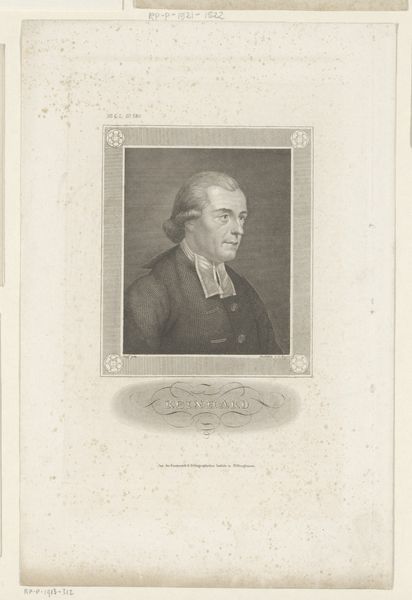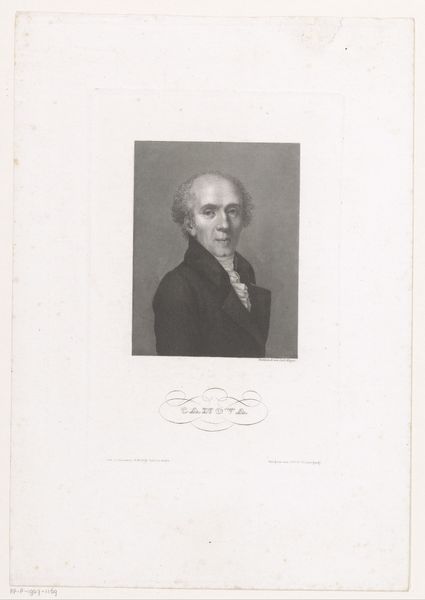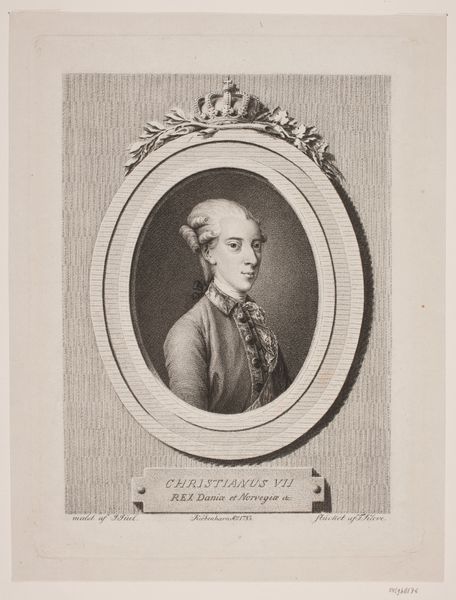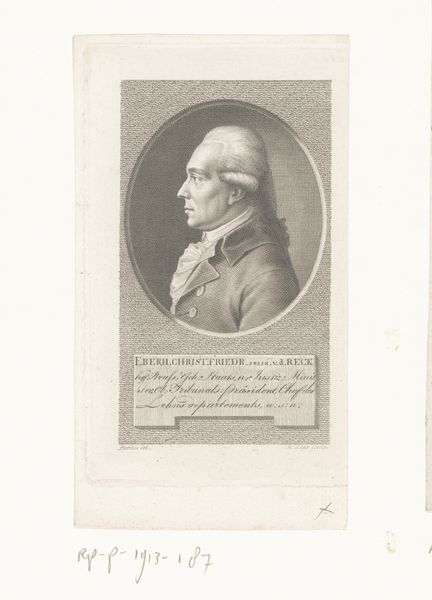
print, engraving
#
portrait
#
neoclacissism
# print
#
historical photography
#
19th century
#
history-painting
#
engraving
Dimensions: height 343 mm, width 260 mm
Copyright: Rijks Museum: Open Domain
Curator: This is a print from between 1805 and 1817, a portrait of Rutger Jan Schimmelpenninck by Ludwig Gottlieb Portman, currently held here at the Rijksmuseum. It is an engraving, showcasing a figure within an oval frame. Editor: My initial impression is one of stern authority, though the gray palette also conveys a sense of cold remove. The formality is almost intimidating. Curator: The composition adheres quite rigidly to Neoclassical principles, doesn't it? The portrait is centered, contained within geometric forms. Note the restrained elegance of line and form, mirroring the rational ideals that underpinned the Neoclassical movement. The engraving medium itself lends to that sense of precision and clarity. Editor: It is tempting to consider Schimmelpenninck's position within the Bataavian Republic. Was this portrait meant to project power and stability during a period of political upheaval? The inscription below seems to bolster this idea of authority and leadership in the face of uncertainty. How might his role as Raadpensionaris—the leading politician—influence the visual narrative? Curator: Precisely. Portman’s mastery in capturing the texture of the coat and the man's subtle facial expression is really the main visual event in this carefully constructed design. There’s a deliberate flattening of space which puts the figure forward, emphasizing presence without resorting to bombast. Editor: Yet that very controlled style raises questions. Was this visual restraint a way to distance Schimmelpenninck from the excesses of the past—the monarchy, perhaps? Or did it perpetuate a new form of elite power? There’s a fascinating tension here between the surface representation and the socio-political complexities it attempts to contain. Curator: Looking at the engraving’s lines, the gradation of tone, the overall organization on the page, I am left with an appreciation for the restrained elegance of Portman’s technical skills and ability to realize Neoclassical aesthetic values. Editor: I leave with the sense that this piece is a cultural artifact and a visual document that compels us to critically examine not just the portrayed subject, but also the power dynamics embedded within that era.
Comments
No comments
Be the first to comment and join the conversation on the ultimate creative platform.
